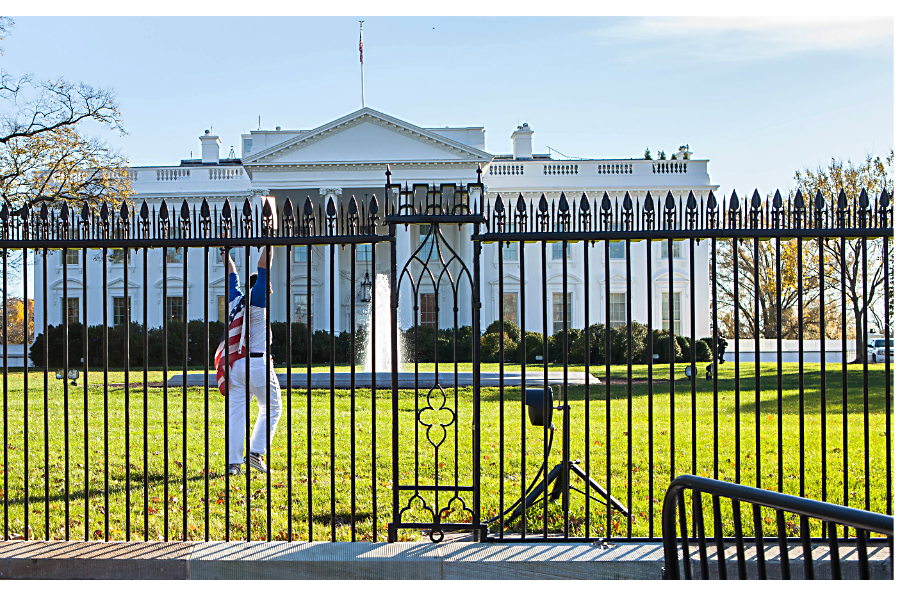White House fence-jumper caught: Should those spikes be higher?
Loading...
Thanksgiving at the White House was disrupted on Thursday when a man draped in an American flag scaled the perimeter fence and jumped onto the grounds.
The man was quickly apprehended by the Secret Service, but not before he had time to raise his hands in triumph, as if just breaching security had been his goal, said witnesses. Secret Service officials identified the man as Joseph Caputo, but did not immediately provide any other information such as the man's hometown or motive.
Witnesses added that Mr. Caputo appeared to be carrying a binder in his mouth. At the time – approximately 2 p.m. – the Obama family was inside celebrating the holiday.
The incident raises an immediate question: How did the intruder make it over the spikes? Earlier this year, the Secret Service added another layer of steel points atop the White House fence as an interim means of increasing security. The move followed a more serious incident, in which another, more determined intruder raced across the north lawn and into the White House itself before being subdued by guards.
If a man wearing a flag and holding something in his mouth can scale the fence and hit the dirt before being apprehended, it may prove the spikes are not all that’s needed. A year ago, Secret Service officials proposed making the fence taller than its current 7-foot, 6-inch height.
Some local architectural groups in Washington have objected to that plan, saying it is not necessary to create a Kremlin-like fortress within a capital city of a democracy. But the Secret Service may now redouble its efforts to make the White House perimeter more secure.
The other, slightly less serious question here is this: Did the incident disturb the president’s turkey day?
There’s little evidence it did, though guards did appear at windows inside the White House following the intrusion.
On Thanksgiving morning, President Obama made a series of phone calls to members of the US armed forces thanking them for their service, according to a White House journalist pool report. He and his family then sat down to a meal of thyme-roasted turkey, honey-baked ham, and prime rib with horseradish, supplemented with cornbread stuffing and braised winter greens. Among other things.
Dessert was six kinds of pie. Here’s guessing that Mr. Obama did not indulge in the traditional Thanksgiving dessert fallback position of saying he would “have a small slice of each.”








